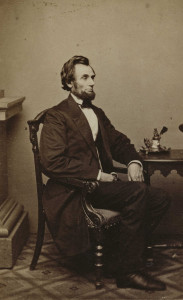According to Robbie Eastmore’s “Register of Resonant Earth Discrepancies,” the differences between our worlds are plentiful; however, in the context of North American history, one key event didn’t take place on Resonant Earth.
On the evening of April 14, 1865, Abraham Lincoln survived an assassination attempt.
The Attempt on Lincoln’s Life and Its Aftermath
 After several nights of prophetic dreams depicting his own death, President Lincoln prevailed upon General Ulysses S. Grant to reconsider his rejection of the President’s invitation to the theater. General Grant reluctantly agreed to accompany the President that night, along with their wives.
After several nights of prophetic dreams depicting his own death, President Lincoln prevailed upon General Ulysses S. Grant to reconsider his rejection of the President’s invitation to the theater. General Grant reluctantly agreed to accompany the President that night, along with their wives.
John Wilkes Booth’s first gunshot killed General Grant immediately. His second shot grievously wounded the President, paralyzing him from the waist down. Mary Todd Lincoln and Julia Grant subdued Booth, earning national respect for preventing a worse tragedy.
After the assassination attempt, President Lincoln, who had long suffered from depression and anxiety, and now found himself confined to a wheelchair and suffering from chronic pain, became maniacally focused on dismantling the sources of Confederate power. Slave plantations were partitioned and given away to former slaves. Businesses were seized and turned over to cooperative ownership. Abuses of power and human rights violations against white former elites were common during this period, and federal forces did nothing to stop them.
Eventually, the South regained control over its political destiny, but by then Reconstruction had transformed every institution to be more modern, liberal, and inclusive. Women and former slaves gained the right to vote and full participation in economic and political life many decades earlier than in our world.
Combined with the United States of America’s early retreat from imperial ambitions after a disastrous war with the Spanish in the Philippines, and an even more untenable U.S. occupation of the newly independent nation, Reconstruction led to widespread distrust and a rapid withering of federal power. Over the first few decades of the twentieth century, a movement grew to redefine and repartition American government. A grand bargain was struck in 1935 that consolidated power in eight nation states bound together in an American Union.